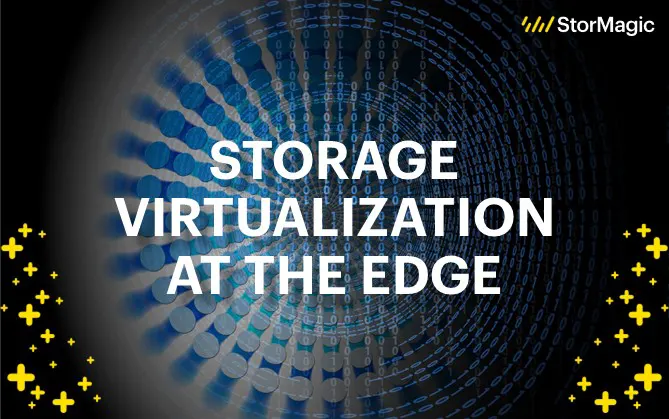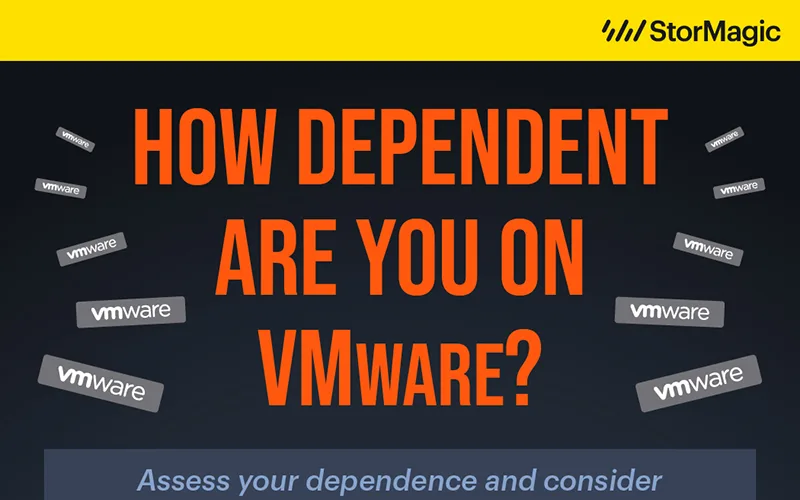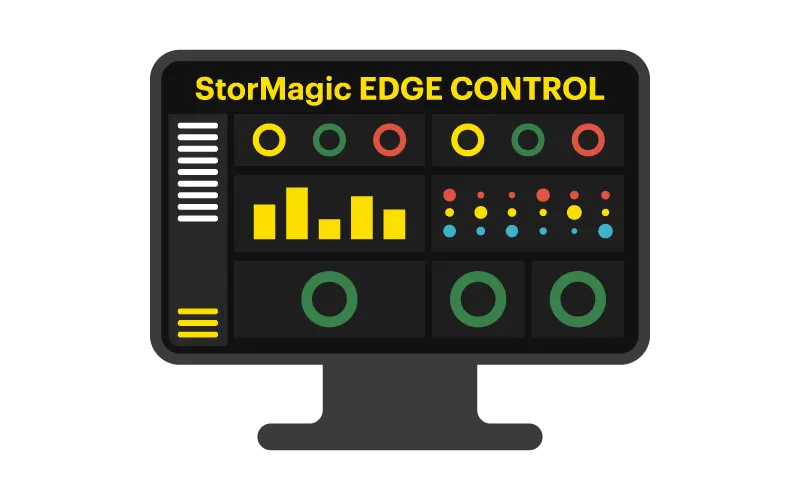While the data storage demands of organizations have increased, due to a number of factors, many companies’ IT budgets have shrunk. This has driven organizations to seek out and re-evaluate costly, complex traditional storage models, in favor of lightweight software-defined and hyperconverged storage models.
The capabilities of virtualization-based products can vary from solution to solution. The challenges that organizations face deploying this technology however typically remain the same: performance, capacity, scalability, and availability. Here are some of the trends we noticed about our customers’ storage virtualization strategies.
Virtualized storage performance issues are a big challenge for organizations
The diverse and often unpredictable nature of edge environments can strain the performance of legacy hardware and standard hyperconverged infrastructure (HCI) configurations.
In fact, a quarter of surveyed organizations have consistently named storage performance as a challenge, with high latency being a major cause of disruption as well as responsiveness of enterprise applications, and user experience.
Network congestion is one of the most common storage virtualization challenges, caused most frequently by an improper allocation of resources to the virtual machines (VMs) running in an environment.
As each VM demands some of the available network bandwidth, poorly configured infrastructure can quickly lead to network interface cards (NICs) being overrun, leading to higher network latency, errors, and even crashes. This can make scaling tricky unless workloads and resources are distributed across the organization’s IT infrastructure properly.
Similarly, limited bandwidth at the edge can also lead to storage virtualization performance challenges such as the suboptimal performance of applications and services. When data is forced to travel significant distances between edge devices, then to datacenters or the cloud where it is processed, performance issues can be further exacerbated, with additional delays and bottlenecks being a common by-product.
Organizations that implement solutions designed for harsh conditions such as edge environments, however, realize performance and capacity improvements. Druckerei Rindt GmbH, after switching to an edge computing solution, increased performance by 50% and achieved 100% uptime at their edge sites. FASTER S.r.l., after eliminating their physical SAN and replacing it with an edge computing solution, saw performance increase by over 100%.
Capacity challenges are a significant issue for organizations
Constrained resources frequently pose difficulties for those deploying data storage solutions at remote locations.
Unlike the traditional datacenter which benefits from ample space, power, and controlled ambient temperature, organizations situated in locations such as oil rigs, retail stores, restaurants, or even in small offices, are too-often faced with issues like dust, dirt, vibration, lack of cooling, and even space constraints.
Naturally, running legacy or high-capacity data storage solutions in environments like these as well as keeping them highly available can present significant challenges and steep costs. For small to mid-sized organizations who typically are limited with resources and budget but need to deploy data storage solutions across multiple sites, using these solutions can make operating at the edge an impossibility.
The right solution to address storage virtualization challenges
Addressing these challenges in edge computing environments often requires a tailored approach that considers the unique characteristics and constraints of edge sites. This may involve the use of edge-specific storage virtualization solutions, optimization for low-latency data access, and robust security measures tailored to the distributed and often uncontrolled nature of edge environments.
But that doesn’t mean that just any edge computing solution will do. The world of edge computing unveils a landscape filled with promises, and if you don’t know exactly what your organization needs rather than what’s simply nice to have, unexpected pitfalls too.
One such challenge stems from the diversity of edge devices and the compatibility maze they present. Edge devices come in all shapes and sizes, each flaunting its unique hardware, operating system, and software cocktail. The result? A compatibility puzzle that can throw a wrench into the smooth processing of data, slowing things down or, worse, bringing them to a halt.
Adding to this complexity, the lack of common standards in edge computing makes it tricky to construct an infrastructure with components from different vendors. Want to switch vendors? Brace yourself for interoperability and integration hurdles, where one vendor’s puzzle piece may not snugly fit with another’s.
For this reason, those navigating this landscape need to ensure they’re doing their homework so they’re acutely aware of what a good solution for their organization should look like to ensure the heterogeneity across the vast array of systems, hardware, and networking interfaces that make up their edge computing solution.
Using hardware that’s smaller in size, lightweight in nature, and with a lower price point can also make storing this technology onsite, and rolling it out across multiple locations realistic for smaller budgets.
Hardware solutions like the HPE ProLiant MicroServer, and the Lenovo ThinkSystem SE350, are two examples of effective hardware data storage solutions that address the capacity challenges of edge environments. Both enable sufficient capacity at edge locations, aren’t sensitive to dust and vibrations, and are efficient with their power, space, and service needs, removing the hassle and cost of onsite engineers for the organizations that leverage them. For more information on the HPE ProLiant MicroServer and the Lenovo ThinkSystem SE350, visit these pages:
Additionally, pairing robust hardware with an edge computing software solution that’s flexible can help keep costs of deployment low and simplify the management of multiple edge devices from different vendors.
These software products should allow for infrastructure customization to meet each edge site’s specific requirements, while still ensuring compatibility with various hardware vendor solutions.
And not only this. Edge computing software solutions also need a centralized management platform to facilitate interoperability and provide a common framework for edge devices to ensure compatibility, streamline operations and manageability, and achieve 100% uptime across all sites.
Introducing StorMagic SvSAN: An effective storage virtualization tool to tackle performance and capacity challenges
IT departments that ignore service issues at critical remote sites potentially harm corporate reputation and customer service. Acutely aware of this problem, StorMagic SvSAN effectively addresses storage virtualization challenges including performance and capacity issues for thousands of organizations across a range of industries and computing environments.
Built with harsh edge computing environments in mind, SvSAN facilitates a lightweight, efficient footprint, helping to avoid server overloads while eliminating performance bottlenecks where resources are constrained.
Through the synchronous mirroring of data across nodes, the solution provides protection against data loss and corruption using just two nodes, all the while maintaining 100% uptime. At the same time, predictive storage caching ensures frequently accessed data is readily available when needed, improving application responsiveness.
Need a solution that scales as you do? No problem! SvSAN’s flexible interface empowers users to use any new or existing hardware, and add or remove nodes as needed, hassle-free. Additionally, StorMagic Edge Control, StorMagic’s user-friendly SvSAN management tool allows for the simplified administration of all SvSAN clusters, whether that’s one or thousands!
To learn more about remedying storage performance issues or understanding and implementing storage performance analysis, check out this white paper.
You can also get more information on StorMagic Edge Control here, or, to discover more about how SvSAN can help your organization overcome common storage virtualization challenges, visit our product page:




